What is Rose Rosette Disease (RRD)?
This disease is caused by a rose virus with the melodious scientific name of Rose rosette emaravirus. It’s spread by a mite that’s about the size of a bit of dust. The mite can be transmitted via clothing when you brush against an infected bush. However, its sheer invasiveness is because its main mode of dispersal is by the wind.
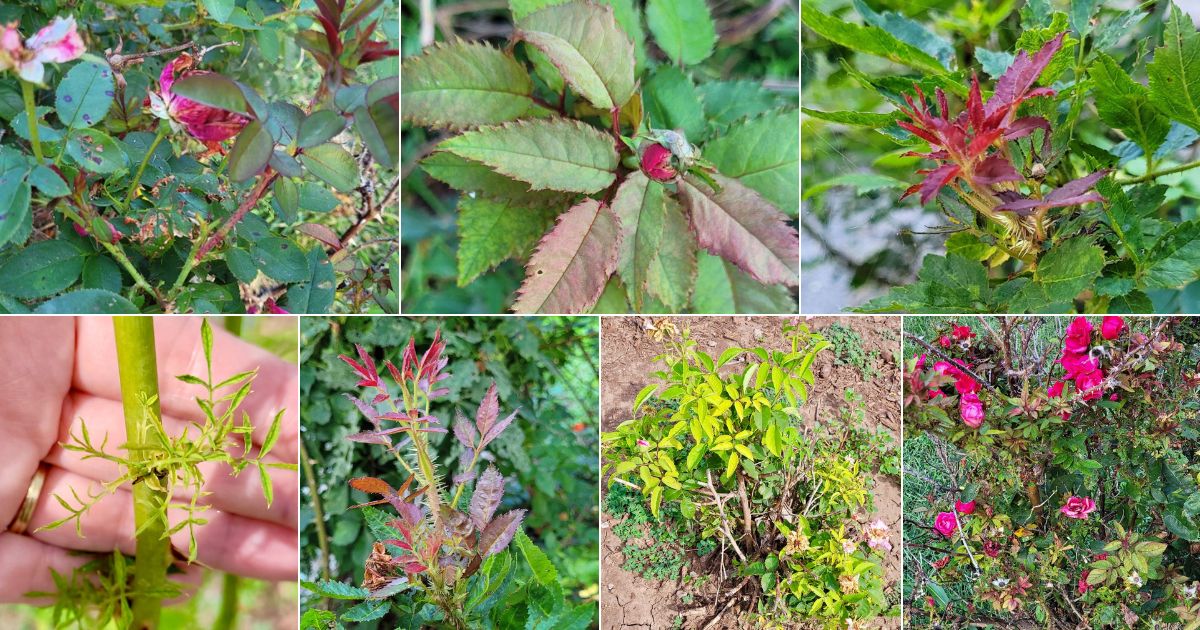
Clouds of mites are carried aloft by the wind, and they drift around until they find a host rose. They’ll generally land on the upper parts of the rose and make themselves at home in the soft, green shoots.
When the mites start feeding on the rose, the rose rosette virus is injected into the plant, and now your rose is infected.
The mites are the reason why this disease is contagious. So if one rose starts putting out infected shoots, pretty soon, the mites will float over to your other roses nearby and infect them as well.
The problem is that rose rosette disease will kill your roses – and there is no cure.
Jump to:
- Rose Rosette Disease is a Death Sentence to Your Rose
- My Experience with Rose Rosette Disease
- Sometimes Rose Rosette Virus is Hard to Recognize
- Your Illustrated Guide to Rose Rosette Disease
- Witches Broom on Roses Might Resemble Glyphosate Damage
- How to Stop Rose Rosette Virus Before It Gets Established in Your Rose
Rose Rosette Disease is a Death Sentence to Your Rose
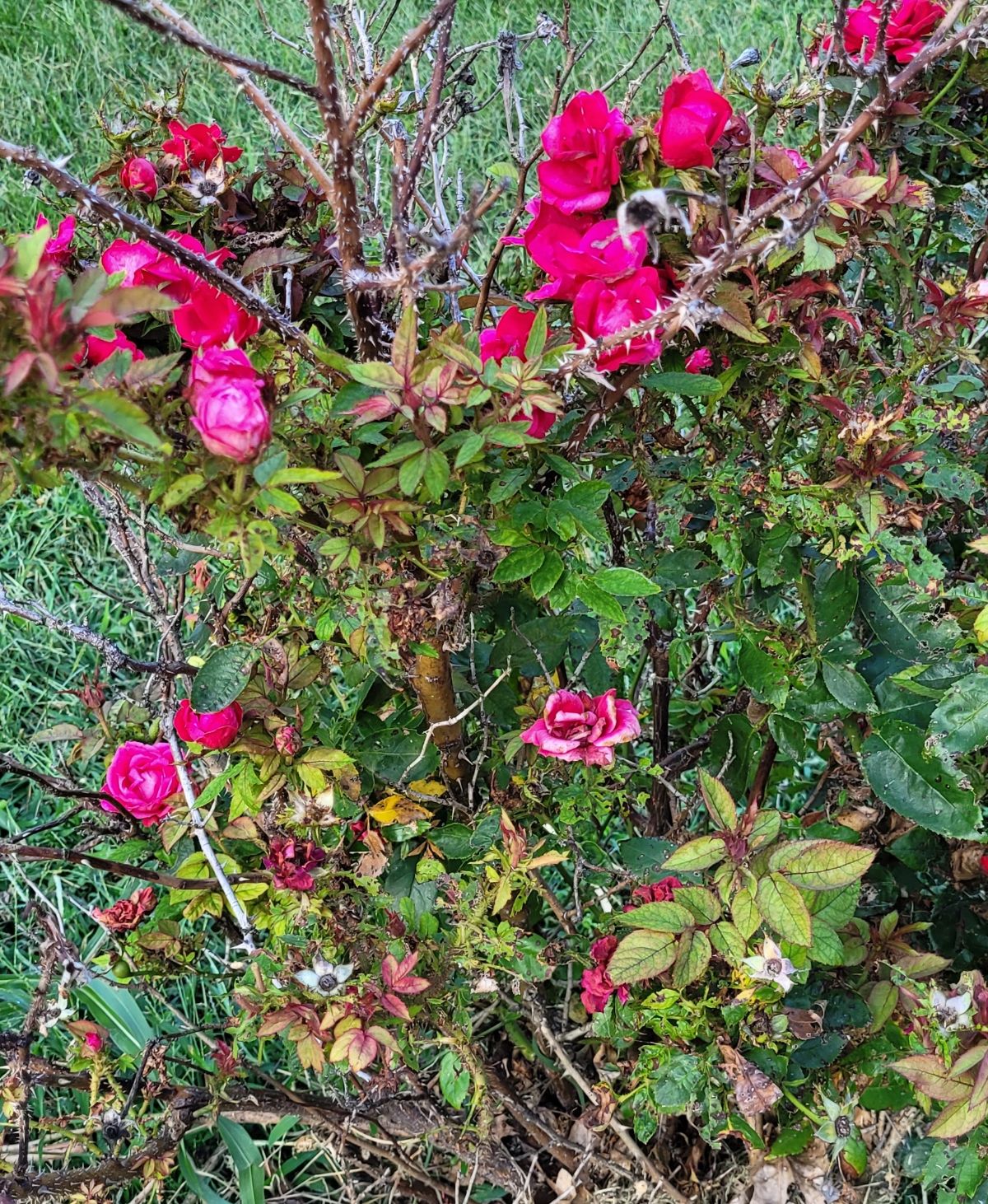
The disease has been destructive to the rose industry as well as to those who are raising roses at home. RRD has killed off hundreds of thousands of roses in public and private gardens. Nursery owners and rosarians are forced to destroy all infected stock. This disease will pose a grave threat to rose cultivation if it manages to spread overseas to cut flower and nursery production areas.
Research to create roses resistant to RRD is ongoing. Other scientists are trying to find some means of curtailing the mite that spreads the disease.
But until that day, when we find some way to stop the disease, the only way to cure a badly infected rose is to dig the whole thing up and burn it.
My Experience with Rose Rosette Disease
In the late 1990s, when I was a newly minted municipal horticulturist, I discovered that the public rose garden that I was in charge of was filled to the brim with roses that were badly infected with the rose rosette virus. Some of the roses were covered with witches' broom, and many were dying.
I had to dig up and get rid of 75 RRD-infected roses that year and more after that. Through trial and error, I eventually learned enough about the disease to contain it.
Once I could keep it in bounds, then I was able to grow a thriving rose garden, even despite rose rosette disease doing its best to reinfect my brand-new roses.
I was able to stop it in its tracks! But it was quite a process.
You, too, can stop rose rosette if you catch it early enough. Read on.
Sometimes Rose Rosette Virus is Hard to Recognize
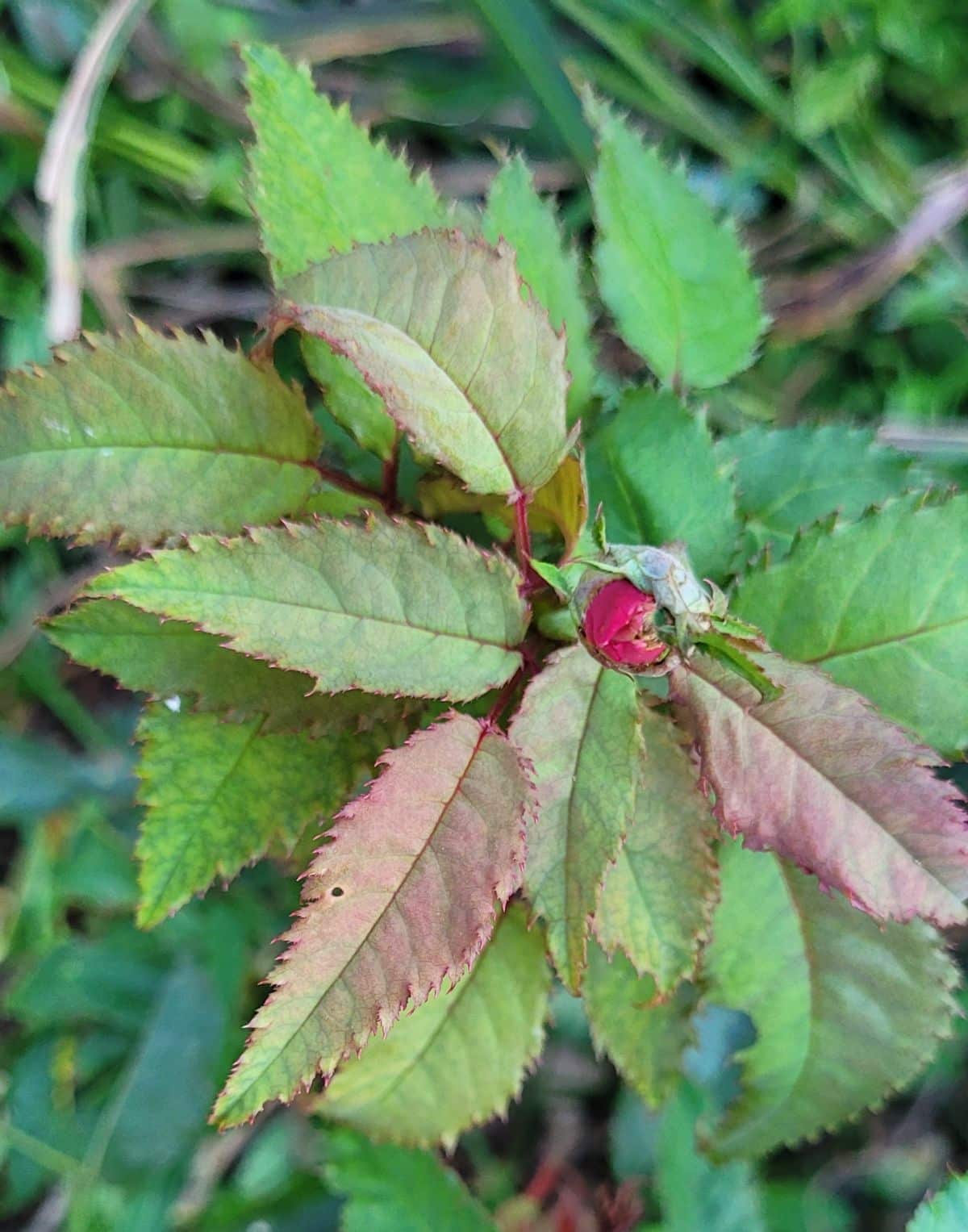
Here’s the problem with rose rosette: Often, the disease shows up in a way that doesn’t look like the usual images of it. Rose rosette is subtle enough to look “off” but, for the layman, isn’t enough to ring any alarm bells.
I had some ‘Therese Bugnet’ roses in the rose garden that looked like they had been afflicted by powdery mildew, but I kept looking at them, thinking, “Now, is that rose rosette?”
There were none of the classic deformed burgundy hyperthorny shoots on the ‘Therese Bugnet’ roses. The foliage was wrinkled with a whitish cast, which is how powdery mildew looks on a rugosa rose. New growth didn’t look too hot either – but again, powdery mildew will do that as well.
But there seemed to be an additional lime-green tinge to the foliage that was like the lime-green foliage I’d sometimes see on a rose afflicted with rose rosette disease.
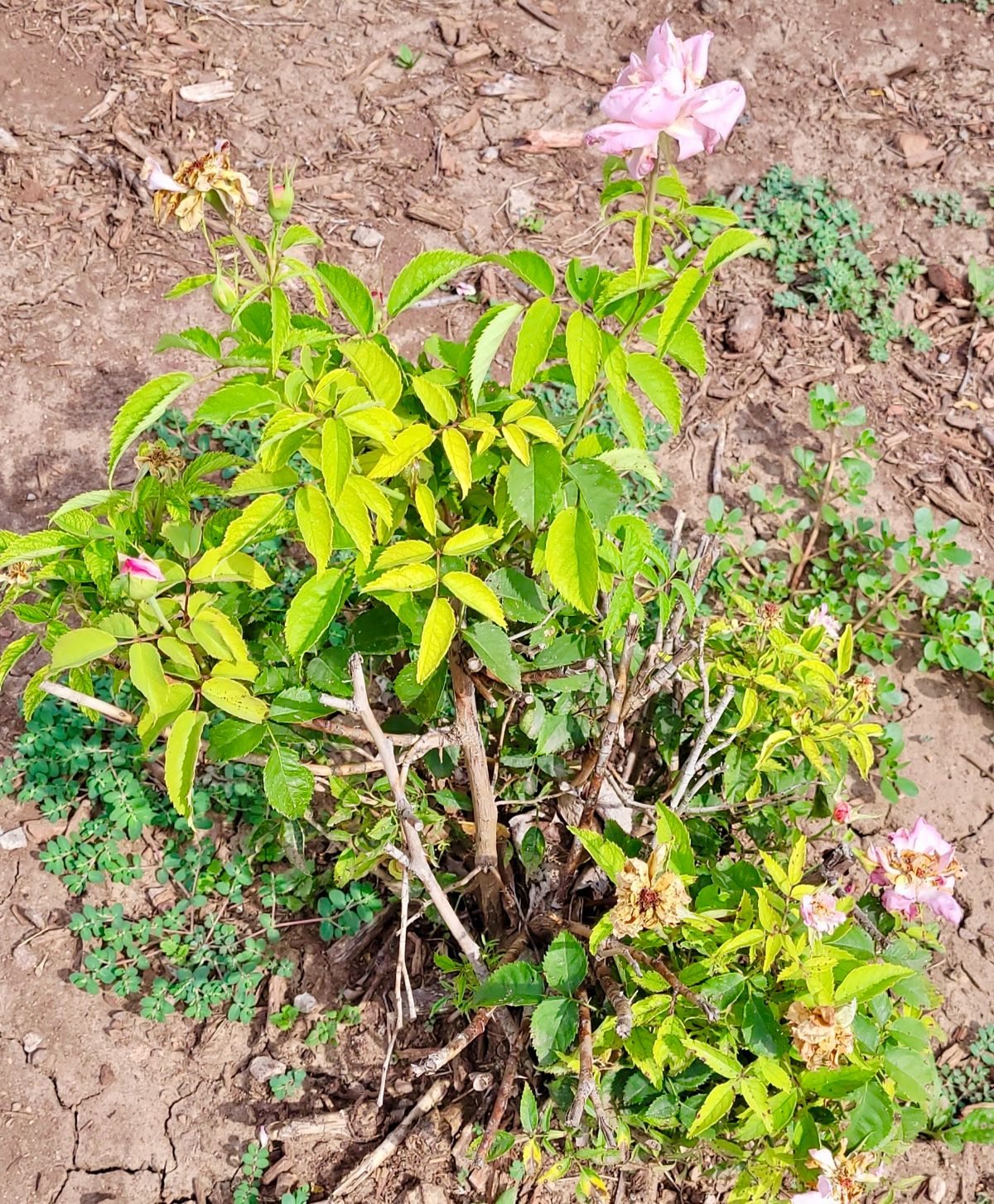
Hindsight is 20/20. The rose probably had both diseases. Now I think I should have just given the ‘Therese Bugnet’ roses some systemic fungicide and then cut off every branch that looked infected with RRD or powdery mildew, then watched their new growth like a hawk.
When in doubt, cut the rose back and get the possibly-infected growth out of the garden. Better safe than sorry.
Your Illustrated Guide to Rose Rosette Disease
If you’ve seen strange growth in your rose garden and you’re concerned, read on. Here are 8 signs, along with lots of pictures, that can help you decide if your rose has fallen victim to RRD.
- Witches’ Broom on RRD-Infected Roses
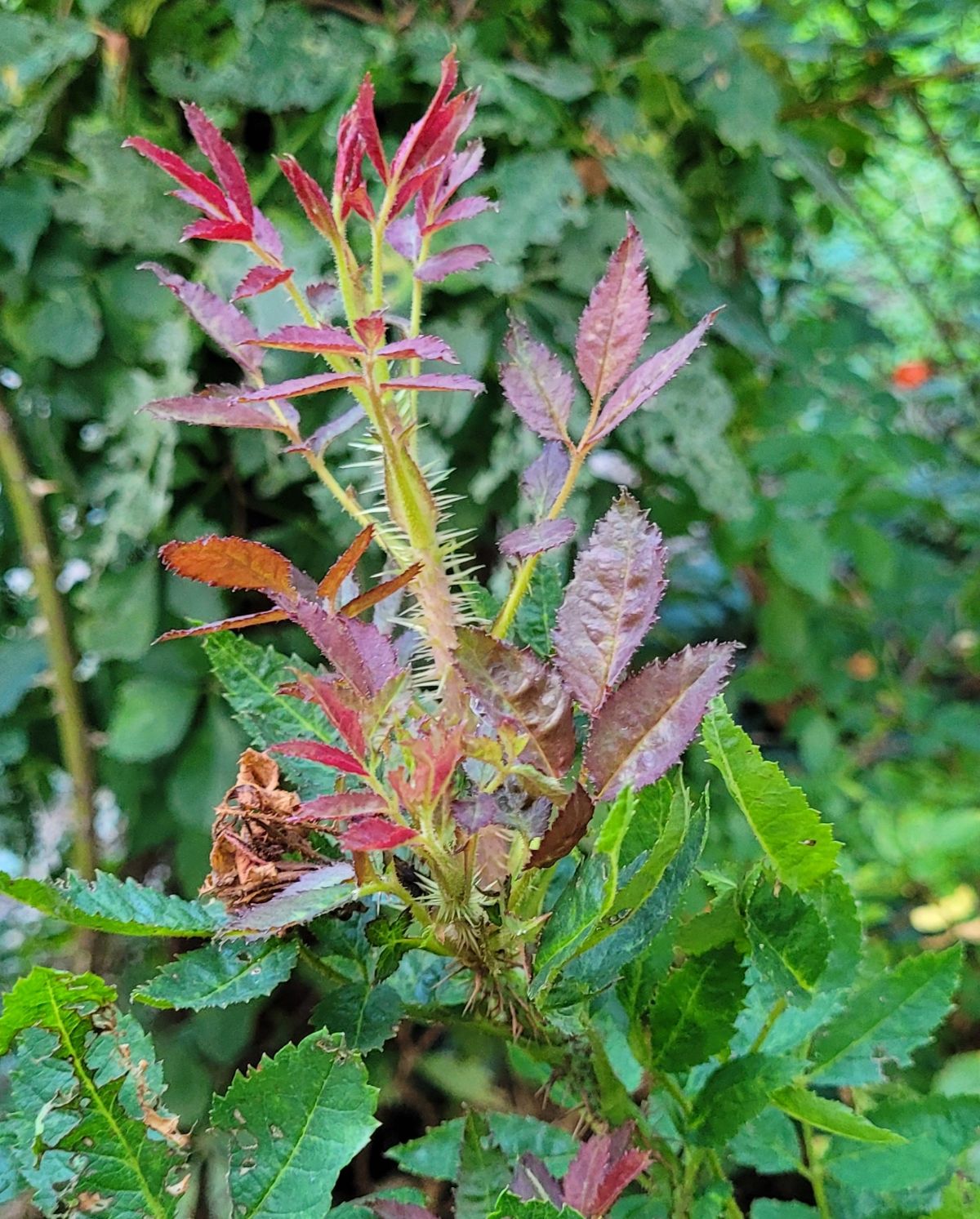
Dense clusters of “witches’ broom” on roses is a common indication of rose rosette disease. These clusters look something like a broom made of many twisted and excessively thorny shoots, deformed leaves, and crumpled buds.
Often the witches’ broom is a dark burgundy, but on some roses, it shows up in a lime green color.
- New Growth is Distorted and Discolored
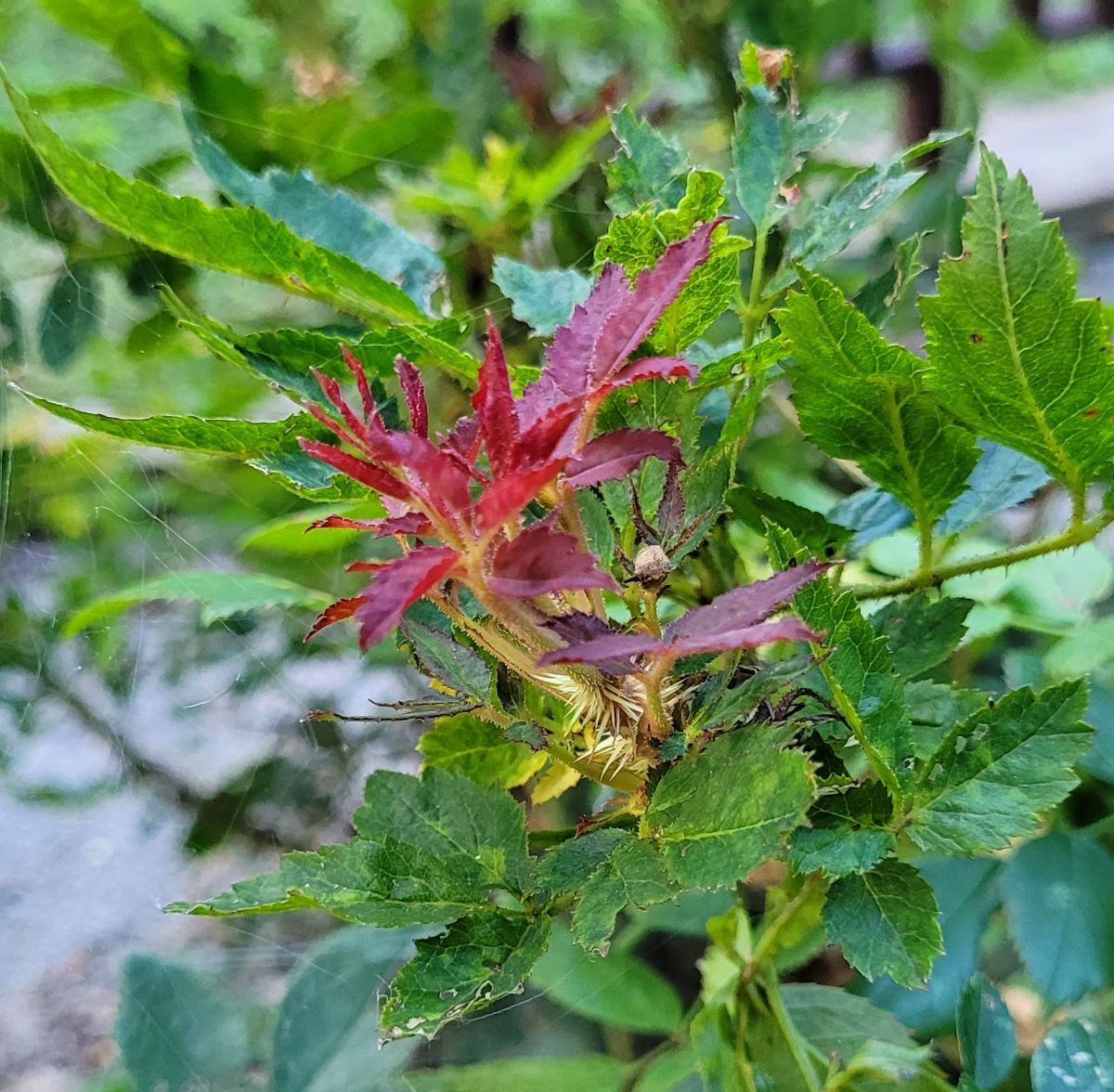
RRD often appears as abnormal, discolored growth on your rose, especially compared to normal growth on the same plant. Instead of bronze growth with flat leaves that eventually turn a healthy green color, this growth pops out in a strange reddish or purple shade that doesn’t resemble anything your rosebush has ever done.
One of the hallmarks of rose rosette disease is the fact that your rose is suddenly putting out weird, deformed growth that you’ve never seen before.
- Hyperthorny Canes and Rubbery Thorns

A very common trait of rose rosette disease is the overabundance of thorns on the infected growth. The canes on RRD-infected roses produce a ton of thorns that are quite dense and rubbery – sometimes so rubbery that you can squish them between your fingers without getting hurt.
The number of thorns and prickles on some of these infected roses is excessive, even compared to roses that are ordinarily prickly.
The canes on RRD-infected roses can be extremely rubbery and bendable. You could just about tie some of them in a knot if it weren’t for all those prickles that covered the blessed things.
- Elongated Canes
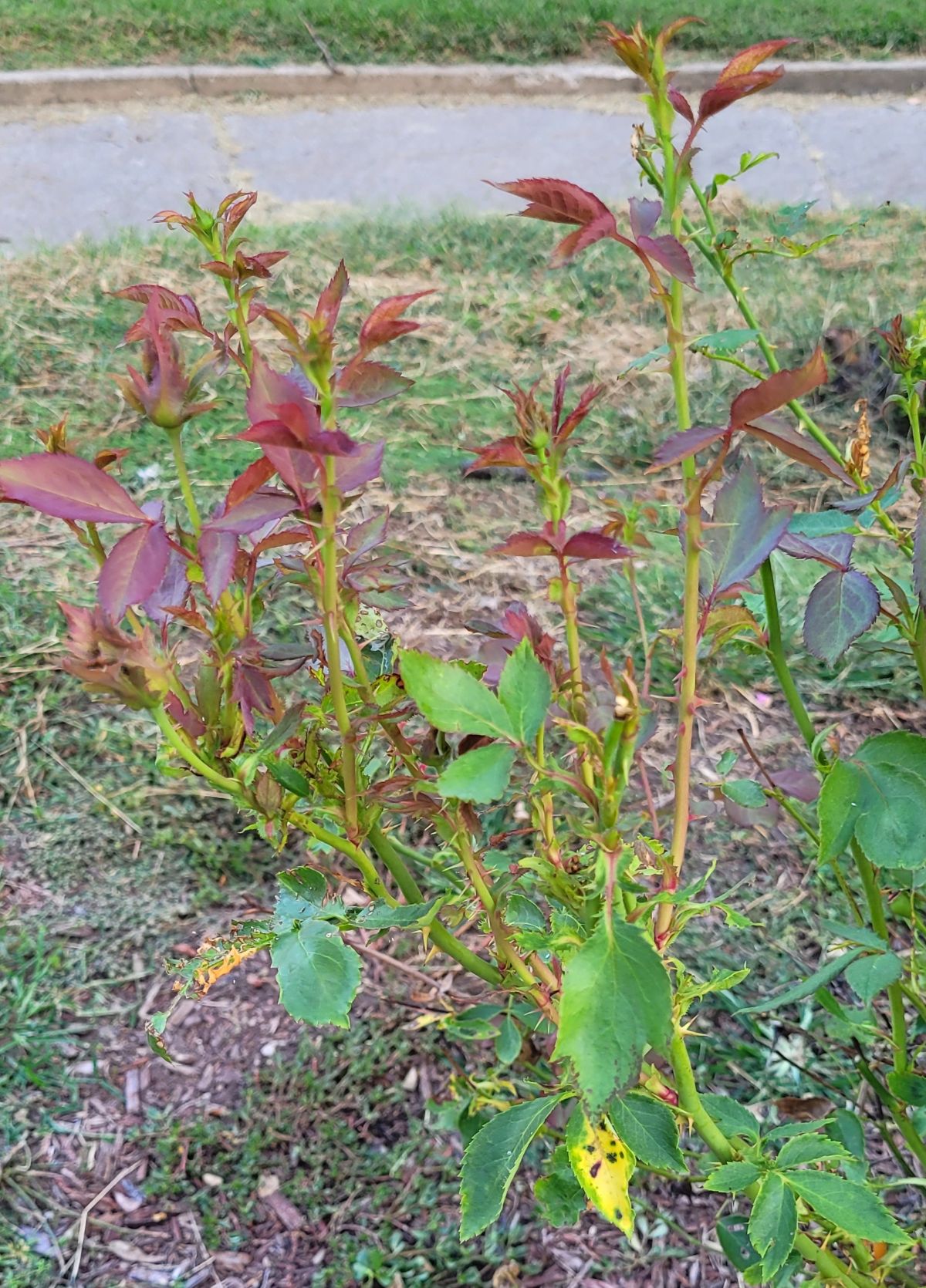
These infected rose canes can also be elongated, growing a lot longer than normal growth, and they grow fast. Sometimes these canes won’t grow straight, but they’ll spiral or be all crooked.
So if you have a normal-looking rosebush that’s nice and rounded and being very well-behaved – then all of a sudden, a skinny Dr. Seuss sprout shoots into the air and towers over the rest of the plant – then RRD has arrived.
- Pebbled or Needlelike Leaves
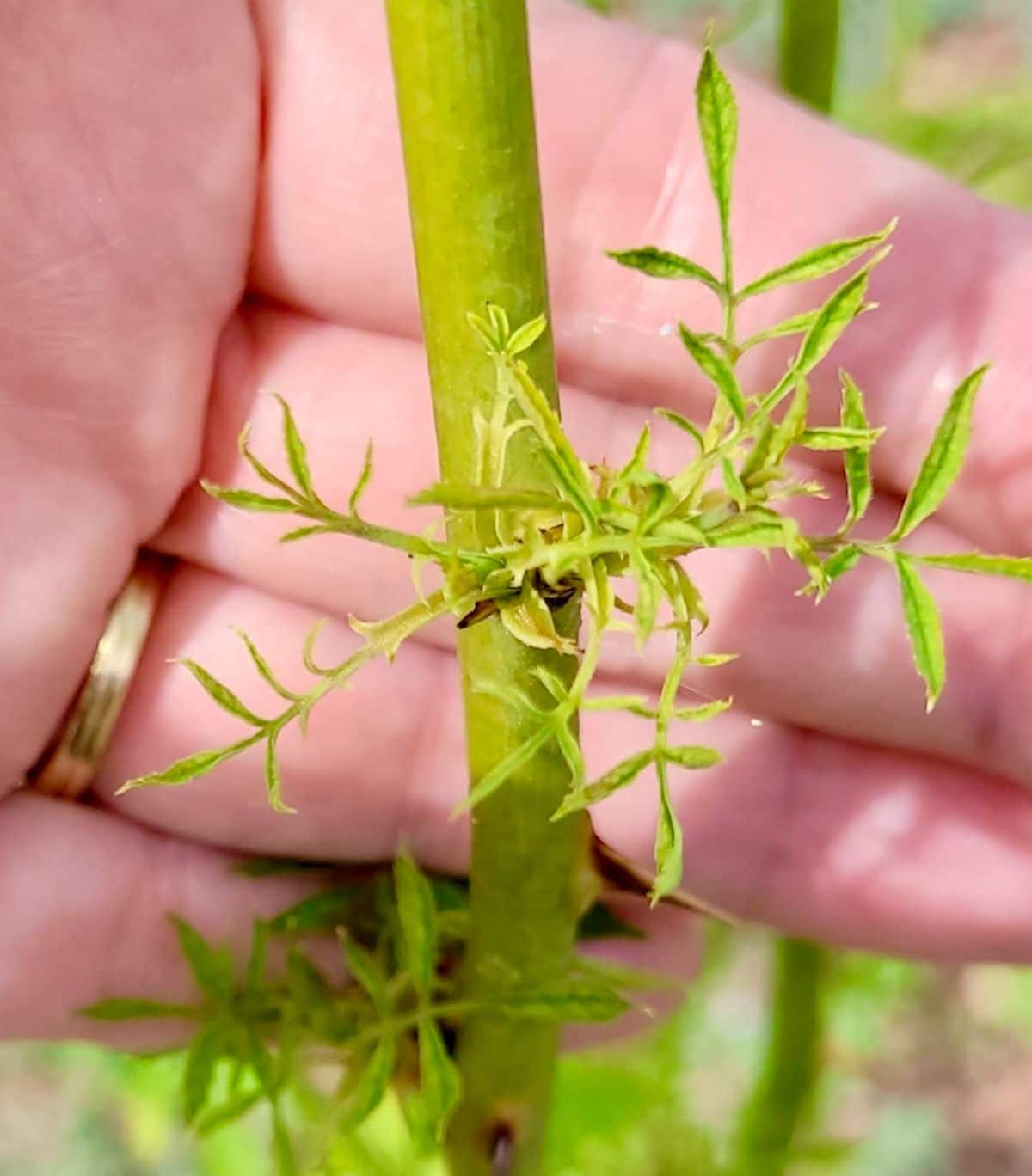
Look for oddly skinny leaves that resemble pine needles on roses that have rose rosette. Another sign is when you see warped leaves that have a pebbly or bumpy texture, especially when compared to normal leaves, which are shiny and flat.
- Strange Growth Coming from Only One Part of the Rose
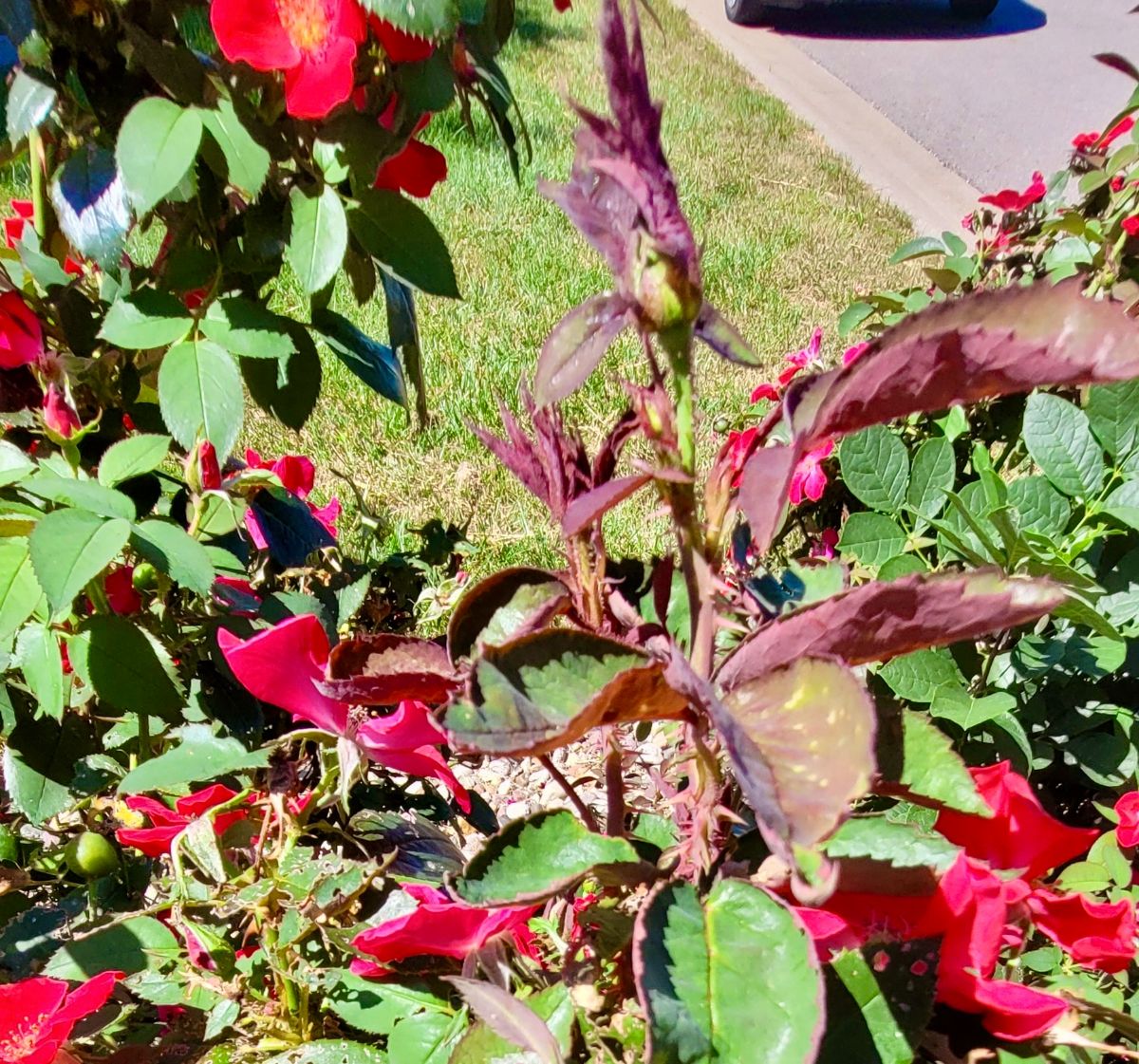
When this disease first shows up on the rose, it almost always appears on a point near the top of the rose – an odd sprig suddenly sprouting from near the top of one of the rose’s canes. Then more odd growths come from that area. Then perhaps another shows up nearby – or the odd growths start sprouting from farther and farther down the cane as the virus begins moving through the plant.
- Flowers Look Abnormal and Crinkled
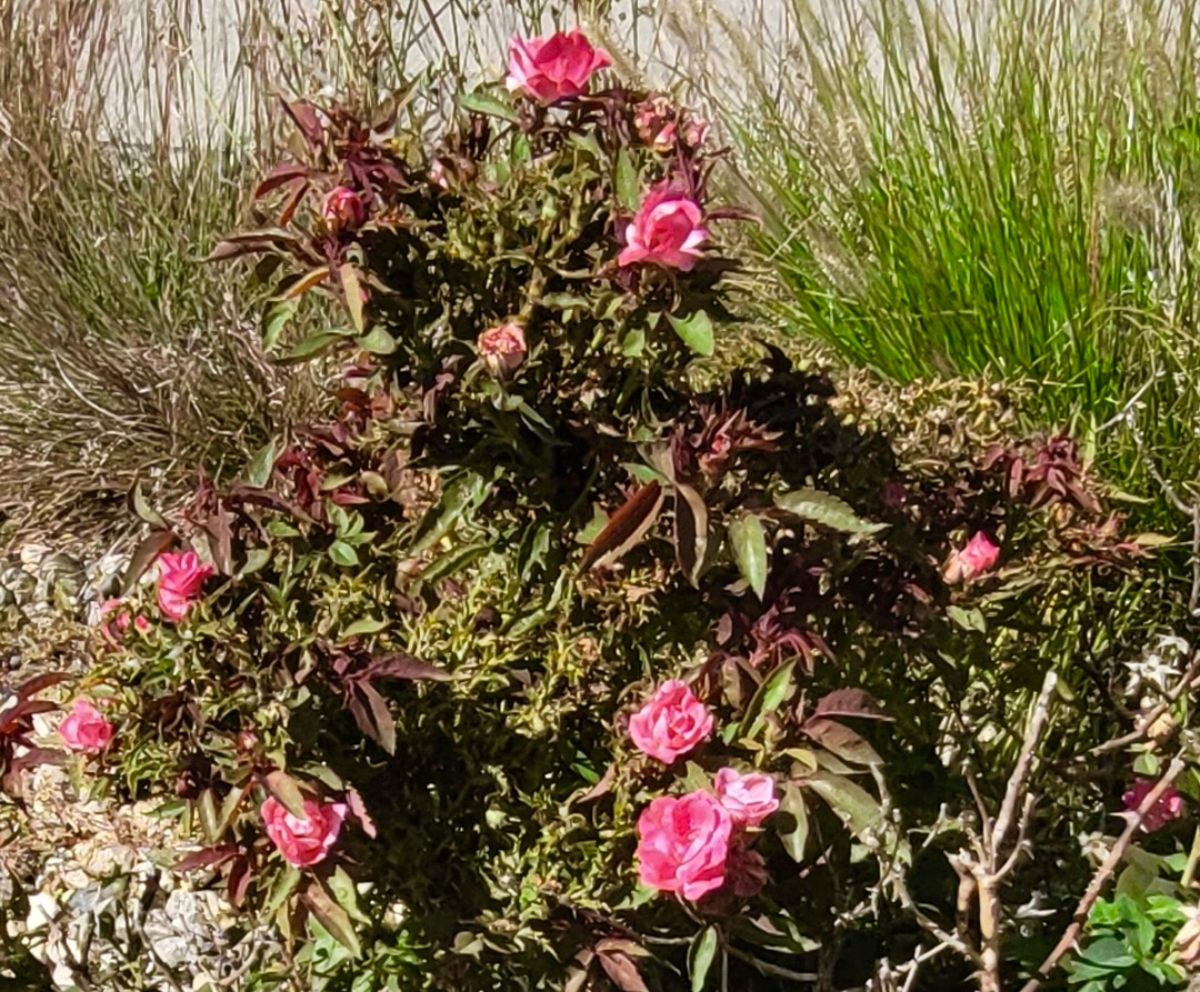
The buds on infected shoots are small and crumpled and open into flowers with fewer petals that are oddly colored. Sometimes the bud is so deformed that the flower can’t open.
- Decline in Vigor and Overall Health
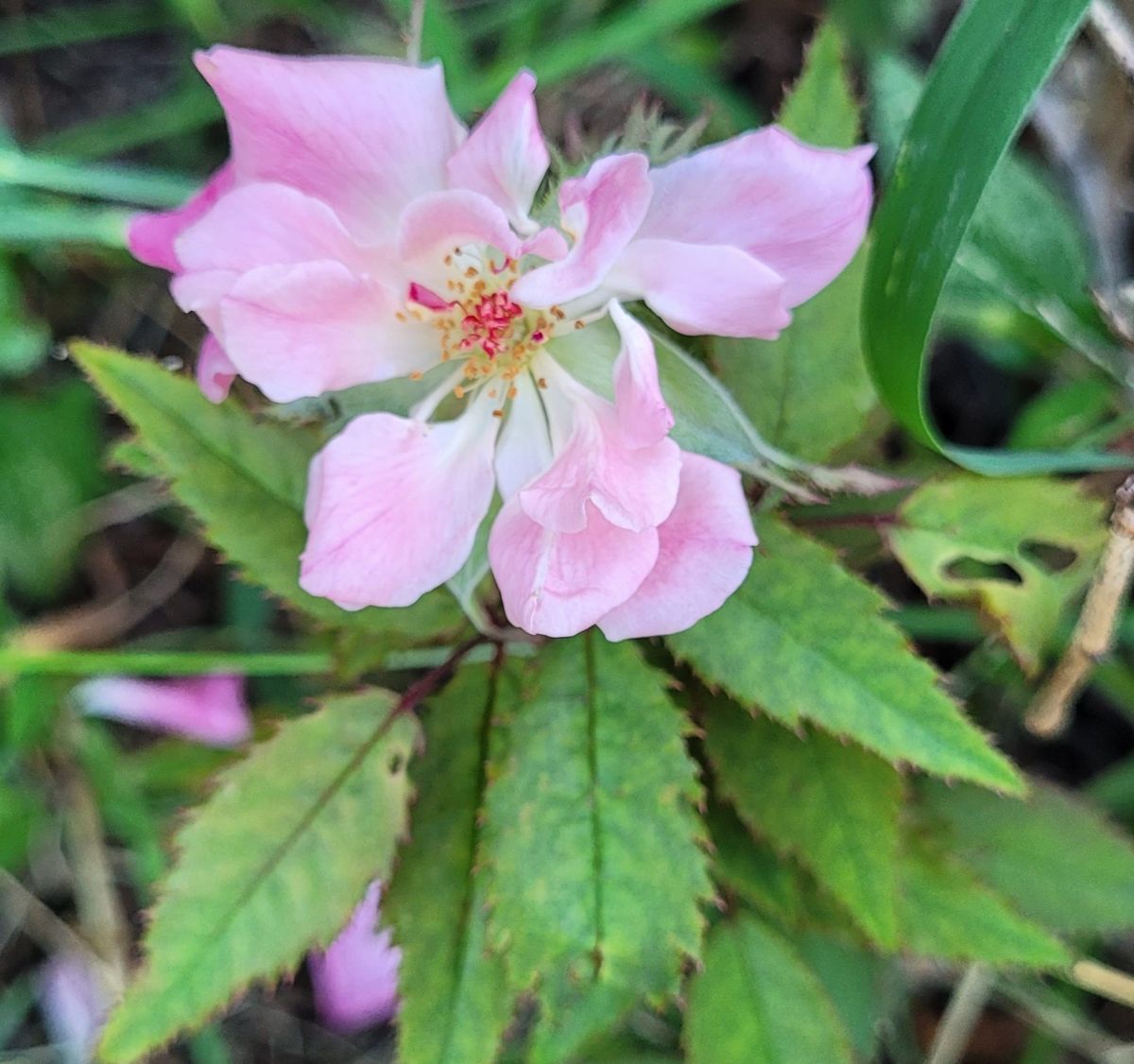
The virus generally starts in one cane, but slowly it will move down the stem until it reaches the bud union or the neck of the plant. At that point, new diseased growth will start appearing on all the canes. The health and vigor of the infected rose plant deteriorate as infected growths replace healthy leaves and stems.
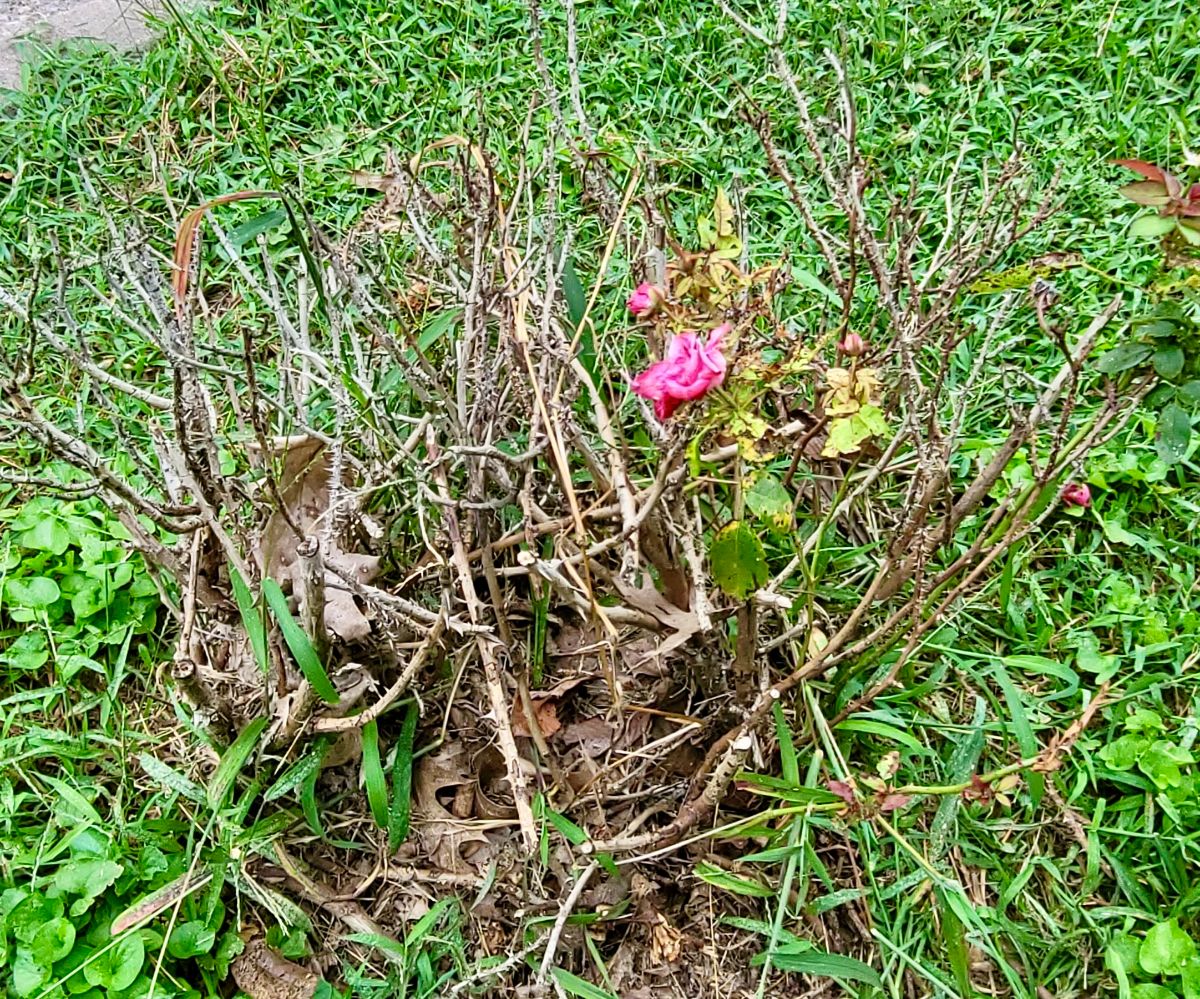
A rose infected with rose rosette generally dies after about two years. The virus-infected rose gets crowded with all the new, deformed stems that sprout everywhere. Slowly over time, these start to die off, turning brown and black. Eventually, the rose is an ugly mass of blackened canes and branches, as if it had been burned. It’s not pretty.
However, there’s a way to stop the disease before it gets very far into your rose – but more about that in a moment.
Witches Broom on Roses Might Resemble Glyphosate Damage
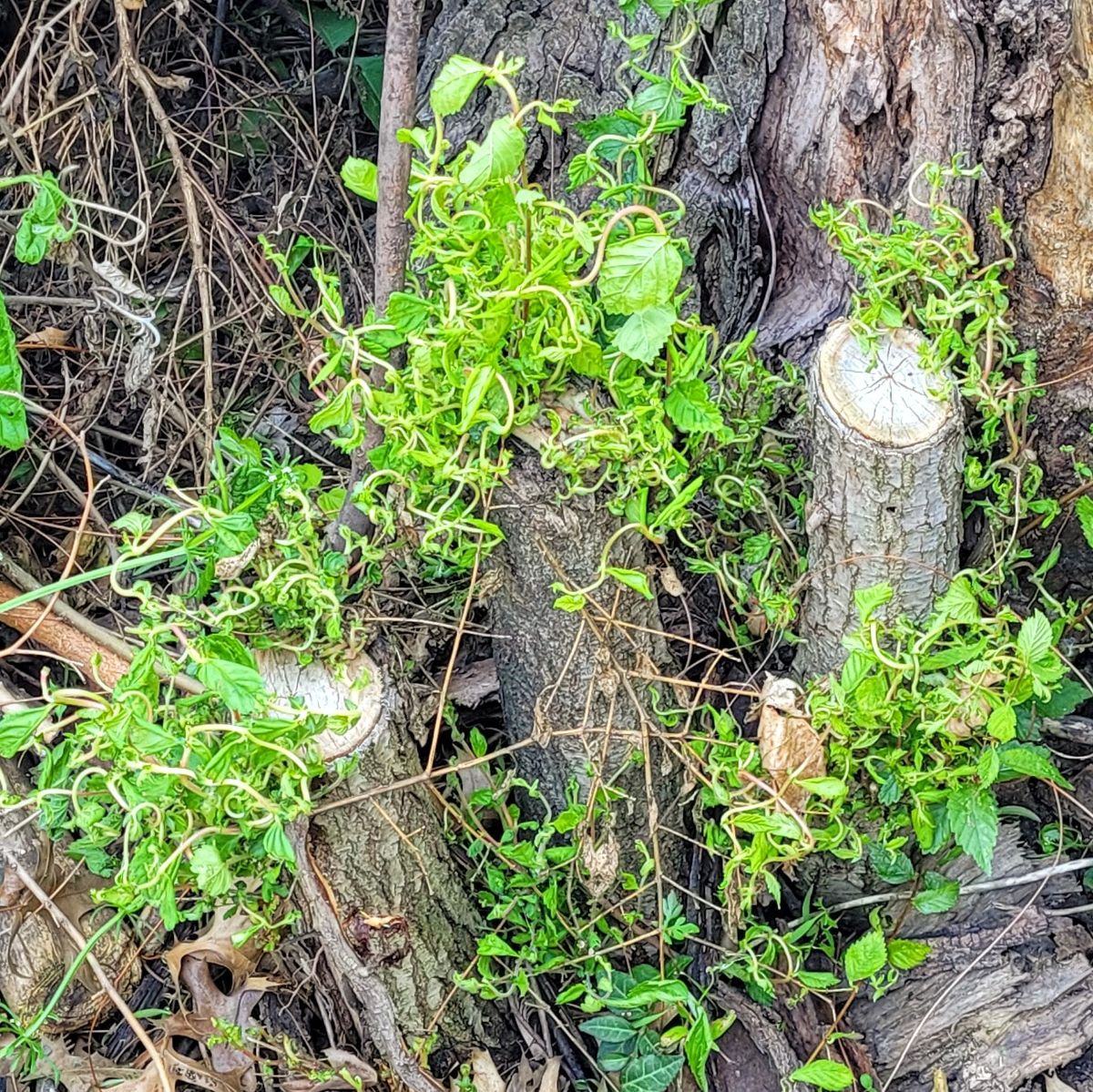
If you haven’t run into rose rosette disease in the field before, you might be forgiven for wondering (or hoping) that the damage has been done by an errant application of Glyphosate, the common herbicide also known as Round-Up.
Herbicide damage can also result in extremely stunted new growth, bunched-up brooms, and distorted, needle-like leaves – just like rose rosette does.
There are a few key differences. On a rose infected with RRD, you’ll see new canes covered with a proliferation of thorns, which herbicide damage will not do. Also, you’ll see dark burgundy pigmentation on some roses (though some RRD-infected roses, admittedly, have only lime-green foliage).
One sure-fire difference: if it’s herbicide damage, other plants near the rose will likely be adversely affected as well. Rose rosette damage affects only the rose.
How to Stop Rose Rosette Virus Before It Gets Established in Your Rose
If you see a new sprig of rose rosette or something that looks suspiciously like it, go get a plastic or paper bag and put it over the infected shoot. Grip the bag to hold it shut below the RRD-infected area – and cut it off the rose about six inches below it. Tie or knot the bag shut and get it out of the garden.
Then sterilize your clippers or pruners with a 9:1 water to bleach solution, or spray them with rubbing alcohol, rubbing them well to scrub off any viruses.
Boom. If you took off the growth quickly enough, your rose should be okay – but watch it like a hawk for any evil new infected growth.
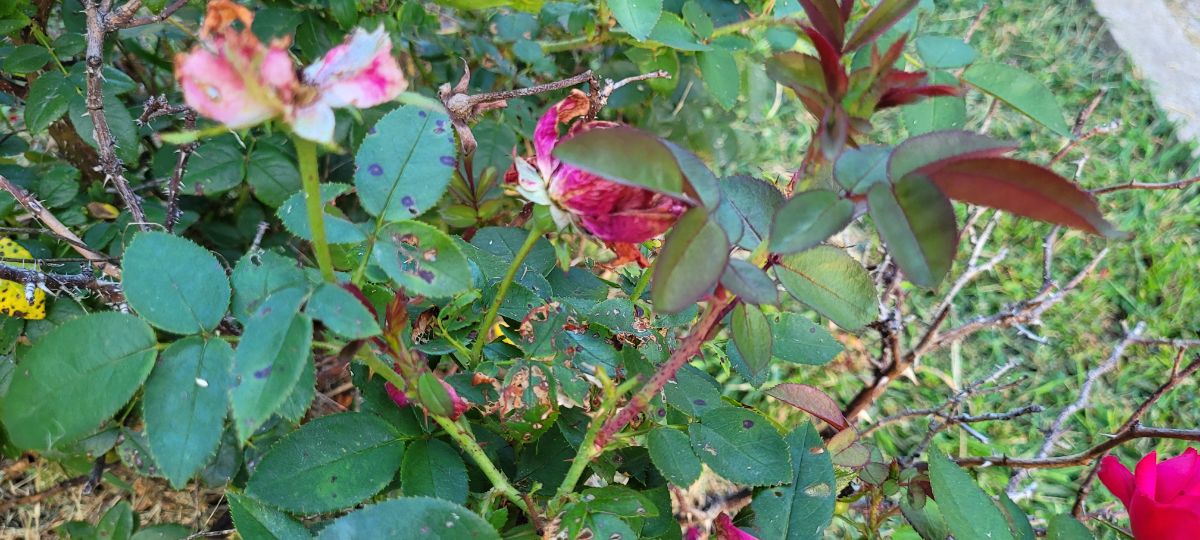
Some rosarians are like, “Don’t do this! You have to dig up the whole rose now!”
Sorry, guys, but this is how I managed rose rosette disease in the 300-rose municipal rose garden, and this was how I managed to keep all my roses alive despite regular incursions of the disease.
If I didn’t cut far enough down the cane, the RRD-infected growths would return. In that case, I’d cut off the whole cane, down to the base or to the bud union, and hope I caught it in time.
When the mites inject the virus into the rose, it takes time for it to move down into the cane. Catch it quickly enough, and you’re good.
If you leave it for too long, the virus eventually makes its way to the bottom of the cane and enters the bud union. Once it reaches the heart of the rose, then infected canes will start coming up from the base, and the virus will also move into the other canes.
At this point, your rose is a goner, so you have to dig it up.
But if you catch the infection early, then your rose has a fighting chance.

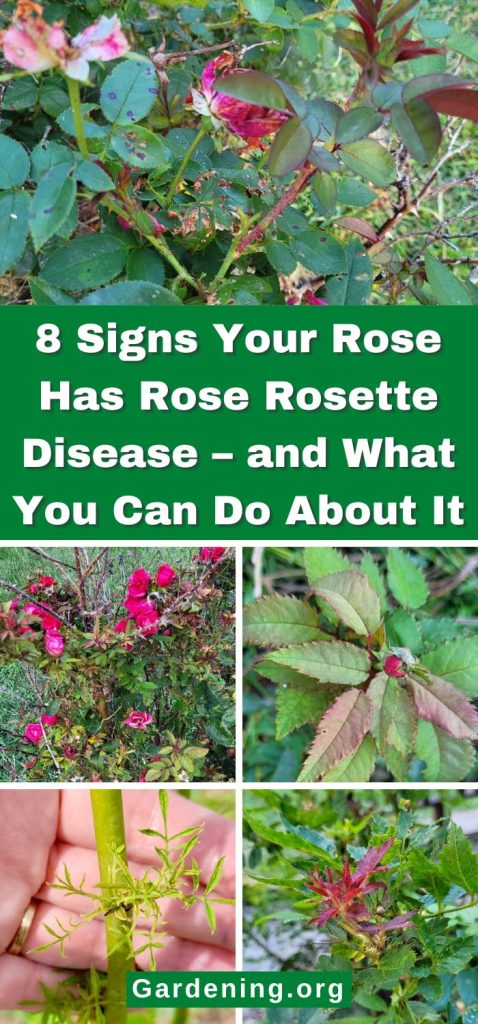
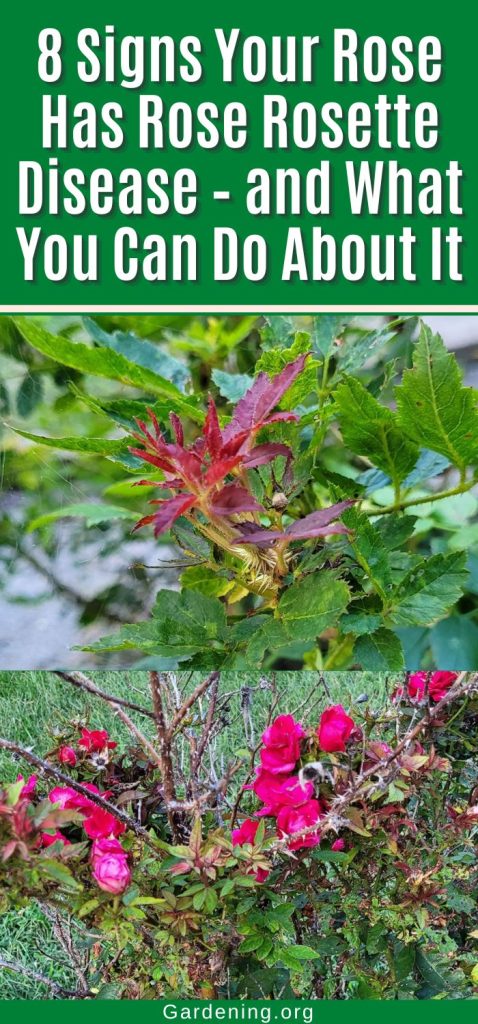
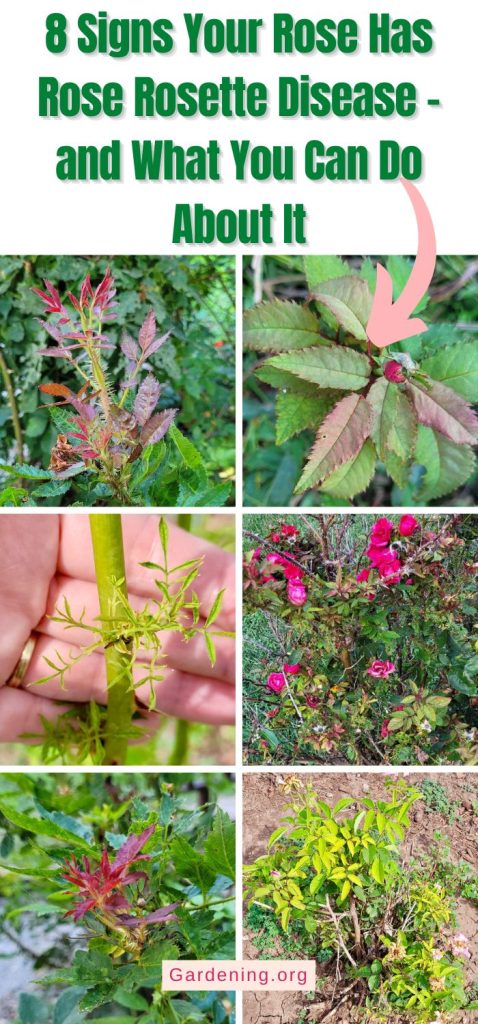
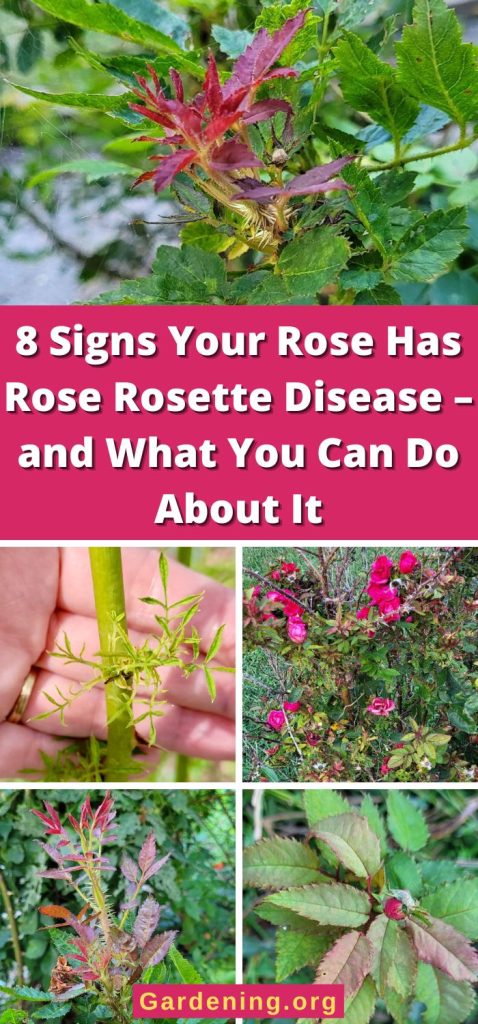




M-A
Is there anything else that causes 'witches broom' growth?
Rosefiend
That's a good question. Off the top of my head, some types of herbicide damage can look similar.
The difference is that RRD will show up as deformed new growth. The rose is sitting there minding its business and suddenly all these weird shoots pop up among the normal growth. Herbicide damage, on the other hand, would cause stunting and deformation in both old and new growth.
When it comes to RRD, "When it doubt, cut it out."
Back in the old days -- and when I say that, I mean the 1940s and 50s -- witches' broom was considered a rose disease that was something of a pain but not a huge issue. These days there's speculation that the witches' broom reported in those days might have actually been the earliest cases of RRD.
Lily
Once you remove an infected rose bush, can you safely plant a new one immediately, or do you have to avoid that area for a while?
Rosefiend
Sorry I didn't see this sooner! Yes, you can plant where an RRD rose originally grew, but 1) take out a lot of the old soil and mix in new soil amended with compost and other nice additions for roses. Roses tend to pull a lot of nutrients out of the soil, and other rose diseases can linger in the soil, so change out most of that soil. and 2) Also make sure there are no root bits floating around in the soil. Infected roots can remain viable in the soil for a surprisingly long time, and if a root from the new rose grafts onto an old root, RRD can travel from the root bit into the new rose.
Kivuti
Did you use any miticide to control the population or spread. Thanks.